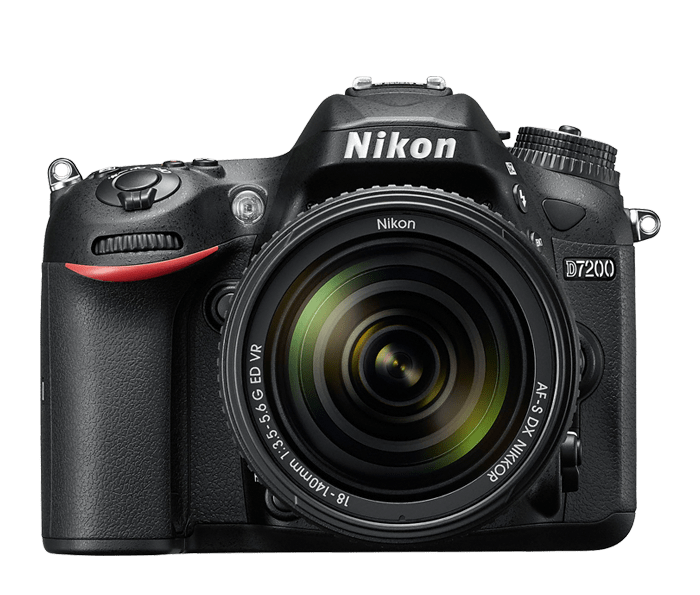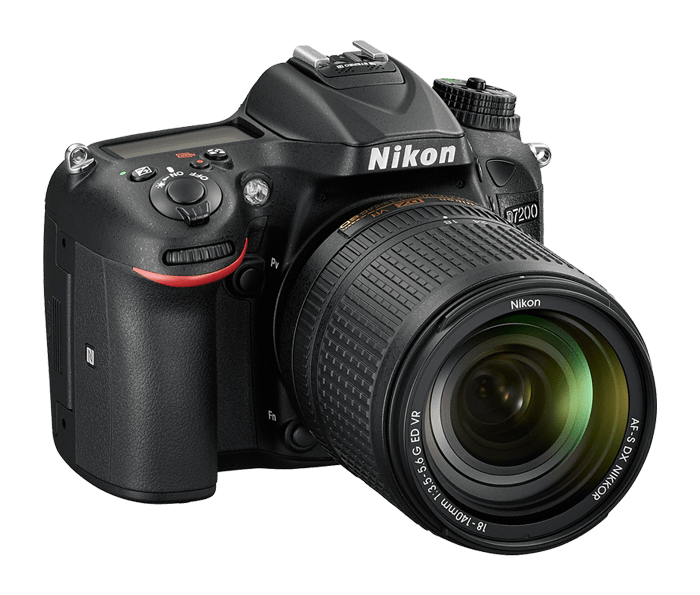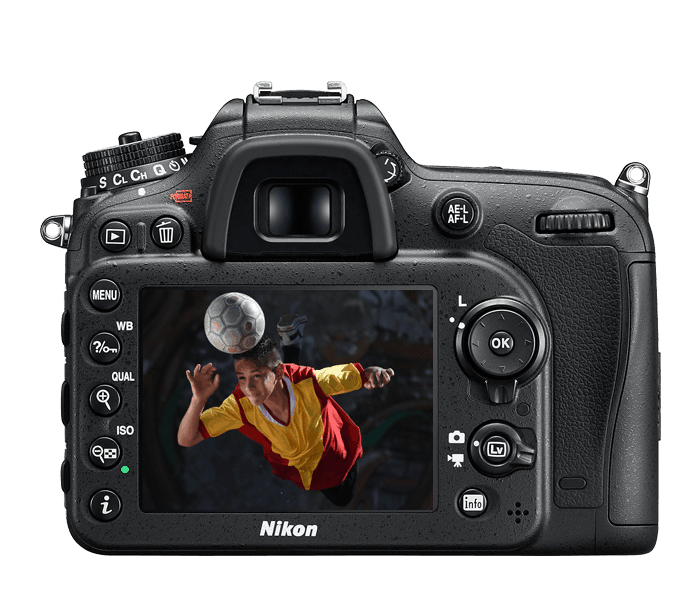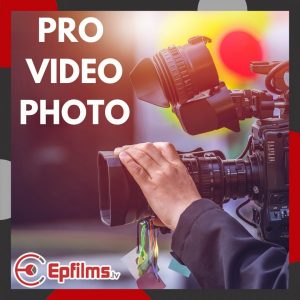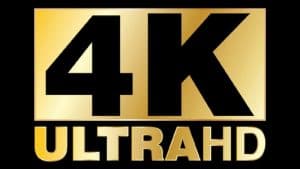Last Updated on January 13, 2019
Features
- Nikon’s first DSLR with built-in Wi-Fi and Near Field Communication (NFC)
- 24.2 MP DX-format CMOS sensor with no optical low-pass filter captures pure, sharp images
- EXPEED 4 image processing with noise-free shooting from ISO 100 to ISO 25,600
- 1080p Full HD video with a built-in stereo mic, Auto ISO, Flat Picture Control, Zebra Stripe highlight monitoring and in-camera time-lapse
Featuring Nikon D7200
Overview
The D7000 lineup of Nikon are enthusiast level cameras, and the latest family member is the D7200. The previous model before its release was the D7100 and this new model does feature significant improvements over its predecessor, chief of which is the ability to perform better in low-light situations. Apart from improvements, certain additions such as WiFi and NFC included in the mix. As such, you can call the Nikon D7200 a camera that provides connectivity with your mobile devices.
The Improvements
In terms of looks, the D7200 pretty much resembles the D7100; their similarities even extend to their size and weight. Some features such as dual SD card slots and a 51-point autofocus system are still in place.
It’s internally and in the parts where most of the changes were made. The Nikon D7200’s sensor is about 0.1 MP higher than what the D7100 was capable of: 24.2MP. While some may not be too impressed with such an enhancement, the slight bump in MP did increase the ISO sensitivity range of the camera – good news for those who like shooting in low-light conditions. The highest ISO the D7100 can go to is 25,600 while the D7200 is capable of shooting all the way up to 102,400.
There are also minor updates to video shooting: 1080p at 60fps.
All in all, the Nikon D7200 is very much like the D7100 except for the fact that it is much improved when it comes to low-light performance, has a longer battery life and comes with integrated WiFi/NFC.
WiFi Connectivity
Much like other cameras in the market these days, the D7200 comes with WiFi connectivity that allows you to connect to a mobile device. You can even remotely control the camera through the Nikon WMU app. Things you can do with the app include triggering the camera shutter and viewing pictures stored in the SD card.
Of course, with WiFi connectivity comes sharing. Those who can’t wait to share their shots with friends, family or their audience (for photographers and artists) can simply upload images to social networks with the camera.
NFC
iOS users who want to try this camera will be disappointed as NFC capability is only available for Android users.
Low-Light Shooting
There are times when photos just don’t come out right when shooting in low-light conditions – they are either too grainy, blurry or are just too noisy. But is problem is effectively addressed by the D7200.
Final Thoughts
The Nikon D7200 is very similar to the D7100 in terms of looks and capabilities save for a few additional features such as WiFi, higher ISO and NFC. Basically, the factors you need to consider when opting to buy this camera is whether you need to shoot in low-light situations or not, as well as determine whether you require a higher ISO for every shot you take. In addition, you can also consider whether you want WiFi or NFC connectivity for your camera. Taking all these into consideration will help you decide whether you want to buy the D7200 or not.
| Type | |
|---|---|
| Type | Single-lens reflex digital camera |
| Lens mount | Nikon F mount (with AF coupling and AF contacts) |
| Effective angle of view | Nikon DX format; focal length in 35 mm [135] format equivalent to approx. 1.5x that of lenses with FX format angle of view |
| Effective pixels | |
| Effective pixels | 24.2 million |
| Image sensor | |
| Image sensor | 23.5 x 15.6 mm CMOS sensor |
| Total pixels | 24.72 million |
| Dust-reduction system | Image sensor cleaning, Image Dust Off reference data (Capture NX-D software required) |
| Storage | |
| Image size (pixels) |
|
| File format |
|
| Picture Control system | Standard, Neutral, Vivid, Monochrome, Portrait, Landscape, Flat; selected Picture Control can be modified; storage for custom Picture Controls |
| Media | SD (Secure Digital) and UHS-I compliant SDHC and SDXC memory cards |
| Double card slot | Slot 2 can be used for overflow or backup storage or for separate storage of copies created using NEF+JPEG; pictures can be copied between cards |
| File system | DCF 2.0, DPOF, Exif 2.3, PictBridge |
| Viewfinder | |
| Viewfinder | Eye-level pentaprism single-lens reflex viewfinder |
| Frame coverage |
|
| Magnification | Approx. 0.94x (50 mm f/1.4 lens at infinity, -1.0 m-1) |
| Eyepoint | 19.5 mm (-1.0 m-1; from center surface of viewfinder eyepiece lens) |
| Diopter adjustment | -2 to +1 m-1 |
| Focusing screen | Type B BriteView Clear Matte Mark II screen with AF area brackets (framing grid can be displayed) |
| Reflex mirror | Quick return |
| Depth-of-field preview | Pressing Pv button stops lens aperture down to value selected by user (A and M modes) or by camera (other modes) |
| Lens aperture | Instant return, electronically controlled |
| Lens | |
| Compatible lenses | Compatible with AF NIKKOR lenses, including type G, E and D lenses (some restrictions apply to PC lenses) and DX lenses, AI-P NIKKOR lenses, and non-CPU AI lenses (A and M modes only); IX-NIKKOR lenses, lenses for the F3AF, and non-AI lenses cannot be used The electronic rangefinder can be used with lenses that have a maximum aperture of f/5.6 or faster (the electronic rangefinder supports the center focus point with lenses that have a maximum aperture of f/8 or faster) |
| Shutter | |
| Type | Electronically controlled vertical-travel focal-plane shutter |
| Speed | 1/8000 to 30 s in steps of 1/3 or 1/2 EV, bulb, time, X250 |
| Flash sync speed | X=1/250 s; synchronizes with shutter at 1/320 s or slower (flash range drops at speeds between 1/250 and 1/320 s) |
| Release | |
| Release modes | S (single frame), CL (continuous low speed), CH (continuous high speed), Q (quiet shutter-release), Self-timer, MUP (mirror up) |
| Approximate frame advance rate |
Maximum frame rate in live view is 3.7 fps |
| Self-timer | 2 s, 5 s, 10 s, 20 s; 1 to 9 exposures at intervals of 0.5, 1, 2 or 3 s |
| Remote control modes (ML-L3) |
Delayed remote, quick-response remote, remote mirror-up |
| Exposure | |
| Metering | TTL exposure metering using 2016-pixel RGB sensor |
| Metering method |
|
| Range (ISO 100, f/1.4 lens, 20°C/68°F) |
|
| Exposure meter coupling | Combined CPU and AI |
| Modes | Auto modes (auto; auto [flash off]); scene modes (portrait; landscape; child; sports; close up; night portrait; night landscape; party/indoor; beach/snow; sunset; dusk/dawn; pet portrait; candlelight; blossom; autumn colors; food); special effects modes (night vision; color sketch; miniature effect; selective color; silhouette; high key; low key); programmed auto with flexible program (P); shutter-priority auto (S); aperture-priority auto (A); manual (M); U1 (user settings 1); U2 (user settings 2) |
| Exposure compensation | Can be adjusted by -5 to +5 EV in increments of 1/3 or 1/2 EV in P, S, A, M, SCENE and night vision modes |
| Exposure lock | Luminosity locked at detected value with AE-L/AF-L button |
| ISO sensitivity (Recommended Exposure Index) |
ISO 100 to 25600 in steps of 1/3 or 1/2 EV; in P, S, A, M modes, can also be set to approx. 1 or 2 EV (ISO 102400 equivalent; monochrome only) above ISO 25600; auto ISO sensitivity control available |
| Active D-Lighting | Auto, extra high, high, normal, low, off |
| Focus | |
| Autofocus | Nikon Advanced Multi-CAM 3500 II autofocus sensor module with TTL phase detection, fine-tuning, 51 focus points (including 15 cross-type sensors; f/8 supported by one sensor), and AF-assist illuminator (range approx. 0.5 to 3 m/1 ft 8 in. to 9 ft 10 in.) |
| Detection range | -3 to +19 EV (ISO 100, 20°C/68°F) |
| Lens servo |
|
| Focus point | Can be selected from 51 or 11 focus points |
| AF-area modes | Single-point AF; 9-, 21- or 51-point dynamic-area AF, 3D-tracking, auto-area AF |
| Focus lock | Focus can be locked by pressing shutter-release button halfway (single-servo AF) or by pressing AE-L/AF-L button |
| Flash | |
| Built-in flash | Auto, portrait, child, close up, night portrait, party/indoor, pet portrait, color sketch: Auto flash with auto pop-up P, S, A, M, food: Manual pop-up with button release |
| Guide number | Approx. 12/39, 12/39 with manual flash (m/ft, ISO 100, 20°C/68°F) |
| Flash control | TTL: i-TTL flash control using 2016-pixel RGB sensor is available with built-in flash; i-TTL balanced fill-flash for digital SLR is used with matrix or center-weighted metering, standard i-TTL fill-flash for digital SLR with spot metering |
| Flash modes | Auto, auto with red-eye reduction, auto slow sync, auto slow sync with red-eye reduction, fill-flash, red-eye reduction, slow sync, slow sync with red-eye reduction, rear-curtain with slow sync, rear-curtain sync, off; auto FP high-speed sync supported |
| Flash compensation | -3 to +1 EV in increments of 1/3 or 1/2 EV |
| Flash-ready indicator | Lights when built-in flash or optional flash unit is fully charged; blinks after flash is fired at full output |
| Accessory shoe | ISO 518 hot-shoe with sync and data contacts and safety lock |
| Nikon Creative Lighting System (CLS) |
Nikon CLS supported; commander mode option available |
| Sync terminal | AS-15 Sync Terminal Adapter (available separately) |
| White balance | |
| White balance | Auto (2 types), incandescent, fluorescent (7 types), direct sunlight, flash, cloudy, shade, preset manual (up to 6 values can be stored, spot white balance measurement available during live view), choose color temperature (2500 K to 10000 K), all with fine-tuning |
| Bracketing | |
| Bracketing types | Exposure, flash, white balance and ADL |
| Live view | |
| Live view modes | Live view photography (still images), movie live view (movies) |
| Lens servo |
|
| AF-area modes | Face-priority AF, wide-area AF, normal-area AF, subject-tracking AF |
| Autofocus | Contrast-detect AF anywhere in frame (camera selects focus point automatically when face-priority AF or subject-tracking AF is selected) |
| Movie | |
| Metering | TTL exposure metering using main image sensor |
| Metering method | Matrix or center-weighted |
| Frame size (pixels) and frame rate |
Actual frame rates for 60p, 50p, 30p, 25p and 24p are 59.94, 50, 29.97, 25 and 23.976 fps respectively; options support both ★high and normal image quality |
| File format | MOV |
| Video compression | H.264/MPEG-4 Advanced Video Coding |
| Audio recording format | Linear PCM |
| Audio recording device | Built-in or external stereo microphone; sensitivity adjustable |
| Maximum length | 29 min. 59 s (10 or 20 min. depending on frame size/rate and movie quality settings) |
| Other movie options | Index marking, time-lapse photography |
| Monitor | |
| Monitor | 8-cm/3.2-in., approx. 1229 k-dot (VGA; 640 x 480 x 4 = 1,228,800 dots), TFT monitor with approx. 170° viewing angle, approx. 100% frame coverage and brightness adjustment |
| Playback | |
| Playback | Full-frame and thumbnail (4, 9 or 72 images or calendar) playback with playback zoom, movie playback, photo and/or movie slide shows, histogram display, highlights, photo information, location data display and auto image rotation |
| Interface | |
| USB | Hi-Speed USB; connection to built-in USB port is recommended |
| HDMI output | Type C HDMI connector |
| Accessory terminal | Wireless remote controllers: WR-1 and WR-R10, Remote cord: MC-DC2, GPS unit: GP-1/GP-1A (all available separately) |
| Audio input | Stereo mini-pin jack (3.5-mm diameter; plug-in power supported) |
| Audio output | Stereo mini-pin jack (3.5-mm diameter) |
| Wireless | |
| Standards | IEEE 802.11b, IEEE 802.11g |
| Operating frequency | 2412 to 2462 MHz (channels 1 to 11) |
| Range (line of sight) | Approx. 30 m/98 ft (assumes no interference; range may vary with signal strength and presence or absence of obstacles) |
| Data rate | 54 Mbps; maximum logical data rates according to IEEE standard; actual rates may differ |
| Authentication | Open system, WPA2-PSK |
| Wireless setup | Supports WPS |
| Access protocols | Infrastructure |
| NFC | |
| Operation | NFC Forum Type 3 Tag |
| Supported languages | |
| Supported languages | Arabic, Bengali, Bulgarian, Chinese (Simplified and Traditional), Czech, Danish, Dutch, English, Finnish, French, German, Greek, Hindi, Hungarian, Indonesian, Italian, Japanese, Korean, Marathi, Norwegian, Persian, Polish, Portuguese (Portugal and Brazil), Romanian, Russian, Serbian, Spanish, Swedish, Tamil, Telugu, Thai, Turkish, Ukrainian, Vietnamese |
| Power source | |
| Battery | One EN-EL15 Rechargeable Li-ion Battery |
| Battery pack | Optional MB-D15 Multi-Power Battery Pack with one EN-EL15 Rechargeable Li-ion Battery or six R6/AA-size alkaline, Ni-MH or lithium batteries |
| AC adapter | EH-5b AC Adapter; requires EP-5B Power Connector (available separately) |
| Tripod socket | |
| Tripod socket | 1/4 in. (ISO 1222) |
| Dimensions / weight | |
| Dimensions (W x H x D) |
Approx. 135.5 x 106.5 x 76 mm/5.4 x 4.2 x 3.0 in. |
| Weight | Approx. 765 g/1 lb 11.0 oz with battery and memory card but without body cap; approx. 675 g/1 lb 7.9 oz (camera body only) |
| Operating environment | |
| Operating environment | Temperature: 0 to 40°C/32 to 104°F; humidity: 85% or less (no condensation) |
| Accessories | |
| Supplied accessories (may differ by country or area) | EN-EL15 Rechargeable Li-ion Battery, MH-25a Battery Charger, UC-E17 USB Cable, AN-DC1 BK Camera Strap, BF-1B Body Cap, DK-5 Eyepiece Cap, DK-23 Rubber Eyecup |
- The SD, SDHC and SDXC logos are trademarks of the SD-3C, LLC.
- PictBridge is a trademark.
- HDMI, the HDMI logo and High-Definition Multimedia Interface are trademarks or registered trademarks of HDMI Licensing, LLC.
- Android is a trademark or registered trademark of Google Inc.
- Wi-Fi® and the Wi-Fi logo are trademarks or registered trademarks of the Wi-Fi Alliance®.
- N-Mark is a trademark or registered trademark of NFC Forum, Inc., in the United States and/or other countries.
- Other products and brand names are trademarks or registered trademarks of their respective companies.
User Reviews
Submit your review | |
No products found.
